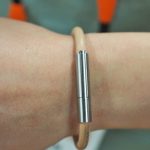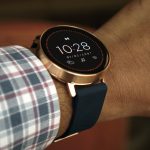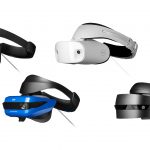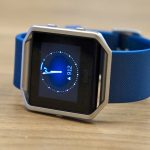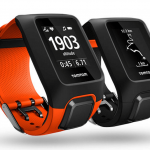Why Wearables Won’t Make Us Smarter, Faster, Or More Productive
The 10,000-step maniac: You either know one or you are one. Legions of tech-enabled fitness fanatics will do anything—including walking in circles around the dining room table—to hit their daily activity goals. We should probably applaud them; it’s great to be active, and it’s great to set goals. But that step counter—or heart-rate monitor or FitBit or even just that wellness app on your phone—probably won’t take your performance to the next level, or keep it there. Here’s why.
Our Gadgets And Their Limits
In some sense, our fascination with tech-driven self-quantification is inevitable. Moore’s law (before its prognosis was declared terminal earlier this year) guaranteed that computing power would become small and affordable enough to clip to our belts or slap on our wrists—a prophecy that was duly fulfilled. And human nature, for its own part, assured that we’d always be interested in how we measure up.
As a result, millions of us are hooked on tracking in detail the level of our physical activity, the rate at which our heart beats, and the quality of our sleep. Gartner estimates that sales of wearable devices (smartwatches, sports watches, fitness bands, and other fitness trackers) will jump from 103 million in 2015 to 163 million in 2017.
Despite our love affair with these devices, there’s little sound evidence that they really help us walk further, sleep better, or live longer. For one thing, the gold standard for testing is the randomized controlled trial. Unfortunately, most of the evidence supporting the effectiveness of trackers either doesn’t come from such trials or combines the use of the tracker with additional behavioral changes.
That makes it tough to know whether the active ingredient is the wearable device, or the counseling and coaching that many studies include as part of the intervention. One study directly compared behavior-change assistance with a pedometer to behavior change assistance without one, and found the pedometer had no effect.
“Check Engine,” “Check Engine,” “Check Engine” . . .
Why don’t these fitness trackers have bigger and longer-lasting effects than we tend to hope they will? Look no further than your car’s dashboard for the answer.
Chances are you’re well acquainted with your car’s “check engine” light. It comes on for any one of a hundred different reasons, ranging from a loose gas cap to a broken catalytic converter, or worse. But what was built to notify owners to take their cars to the shop has backfired. Instead, most of us just want to know how to turn the blinking, godforsaken thing off. A recent Google search for “how to turn off the check engine light” yielded more than 8 million results. The most straightforward suggestion is to put a piece of electrical tape over the light.
This clearly wasn’t what automotive designers had in mind. What they missed is that activating good behaviors often requires addressing not just inattention but also inertia. The check engine light only changes behaviors when a lack of awareness is the problem. For many of us, that’s the lesser obstacle; the ceaselessly flashing dashboard light makes us all too aware—we’d just rather do something else than drop everything and head to the nearest mechanic.
The same holds true for fitness trackers. The same way the check engine light reminds us that it’s time to take the car to the shop but doesn’t actually drive itself there (yet), fitness trackers don’t help the people who wear them overcome their inertia. And the reality that lots of us stop wearing our wearables—by one measure, about a third of users stop using their devices after six months, and half quit within a year—suggests that inertia is the bigger of the two problems.
Why There’s Still Hope
This doesn’t mean that wearables won’t do any good. For some people, inattention really is their main obstacle. Those who are dedicated and motivated to walk 10,000 steps a day may need help knowing whether they’ve hit that target—it’s just that they don’t have the cognitive bandwidth to count and remember all their steps while going about their daily routine.
But it seems likely that those folks are in the minority; so much of human behavior is driven by motivation, and inertia is pretty squarely a motivation problem. On the other hand, technology has already shown signs of tackling it, and trackers may help when they’re used as part of a larger system designed to overcome inertia.
For example, researchers suggest combining wearables to track activity with financial lotteries; participants are entered into the lottery only on days for which the tracker reports that the person has reached their activity goal. (Such lottery-based approaches have had mixed results in formal trials, however.) Similarly, you might put a big chunk of your own money at stake should you fail to reach your fitness goal, with your wearable serving as the referee as to whether or not you lose.
Time will tell whether and under what conditions wearables will consistently, meaningfully, and lastingly improve our performance. It’s just too early to know. But while we wait for more (and better) evidence to come in, it’s best to fall back on what we’ve already figured out about how our brains and behaviors tend to work. Based on the very real human tendencies toward inattention and inertia, I’m betting it’ll take more than just a cool doodad to whip us into shape.
Bob Nease, PhD, is the former chief scientist of Express Scripts, and the author of The Power of Fifty Bits: The New Science of Turning Good Intentions into Positive Results (HarperCollins) as well as over 70 peer-reviewed papers.
Fast Company , Read Full Story
(12)




